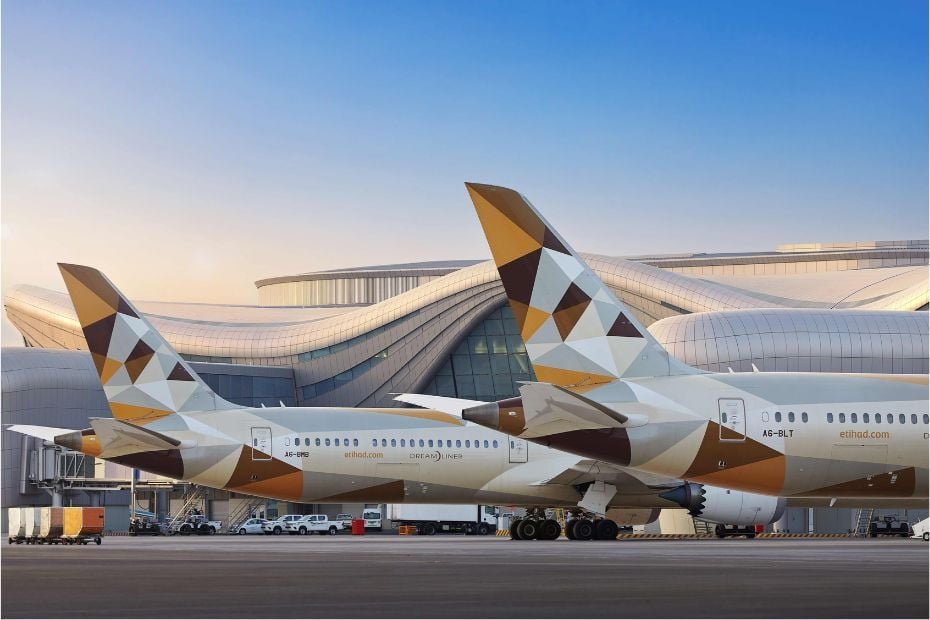Etihad Airways, the national carrier of the United Arab Emirates, has announced a major milestone in its post-pandemic growth journey—carrying an impressive 1.7 million passengers in May 2025 alone. The figure represents a 19% year-on-year increase and signals the airline’s most significant monthly growth this year, reinforcing Etihad’s position as a global aviation powerhouse.
From record-breaking traffic to strategic fleet expansion, Etihad’s May performance speaks volumes about its revival strategy, network reach, and customer appeal. This boost in passenger numbers reflects not just market demand but smart execution on multiple fronts—from route expansion and aircraft acquisition to operational excellence and digital innovation.
A Sharp Climb in Demand
May’s traffic surge marks a standout achievement in what has already been a busy year for the airline. The 19% rise from the same month in 2024 highlights not only the rebound in international travel but also Etihad’s growing relevance among global flyers.

Etihad’s average seat occupancy, or load factor, has also risen steadily, hitting 87% in May compared to 84% the year before. That three-point gain means that more of each flight’s available seats are being filled, boosting profitability and resource efficiency.
This growth is especially significant given the airline’s hub in Abu Dhabi, a rapidly developing international transit point. With increasing competition from regional carriers, Etihad’s consistent load factor improvements show that travelers are not just flying more—they’re choosing Etihad more often.

Year-to-Date Growth Reinforces Trend
Looking beyond May, the momentum has been building steadily throughout the year. Between January and May 2025, the airline carried 8.4 million passengers—an increase of 17% over the same period in 2024.
This sustained growth confirms that Etihad is not just benefiting from seasonal travel peaks or market fluctuations. Instead, it’s capturing real, lasting demand from a broader customer base, including leisure travelers, business executives, and long-haul flyers.
100 Aircraft and Counting: Fleet Milestone Achieved
Supporting this traffic surge is Etihad’s strategic fleet expansion. The airline now operates 100 aircraft, up from 90 in the previous year. This major milestone allows Etihad to fly more passengers, more frequently, to more destinations than ever before.
The current network now spans 72 destinations, including key cities in Europe, Asia, North America, and Africa. Etihad’s emphasis on wide-body aircraft for long-haul efficiency, combined with a modern narrow-body fleet for regional coverage, allows for optimal scheduling and seamless connectivity.
New aircraft deliveries in 2025 have also contributed to lower fuel consumption, improved cabin experience, and fewer delays—benefits that directly impact customer satisfaction.
CEO’s Vision: Growth with Purpose

Etihad’s leadership has framed this progress as part of a larger transformation strategy. The CEO emphasized the airline’s ambition to become the fastest-growing Middle East carrier, backed by smart investments and digital innovation.
From more dynamic pricing to smoother mobile check-ins and AI-powered baggage tracking, Etihad has been fine-tuning its passenger experience at every stage of the journey.
The CEO also underscored that achieving 1.7 million passengers in a single month isn’t just a one-off win. It’s a step toward a much bigger goal: doubling the fleet and tripling passenger numbers by the end of the decade. All these moves are part of the airline’s long-term vision to transform into a global aviation leader with sustainable practices and superior service.
Passenger-Centric Innovations
Etihad’s growth story isn’t just about numbers—it’s also about the quality of the experience. Passengers today are expecting more from their travel: comfort, convenience, customisation, and sustainability. Etihad is delivering on all four fronts.
The airline has invested significantly in its inflight product, including redesigned cabins, improved onboard dining, and next-generation entertainment systems. Its loyalty program has also received an upgrade, offering frequent flyers more tier flexibility, reward options, and exclusive partnerships.
The introduction of new wellness and eco-friendly travel options has further strengthened the brand’s appeal, especially among younger travelers and sustainability-conscious customers. From carbon offsetting tools to fuel-efficient operations, Etihad is working to position itself as a green leader in the skies.
Abu Dhabi: A Growing Global Gateway
Etihad’s performance is inextricably linked to the continued rise of Abu Dhabi as a major global travel hub. Zayed International Airport has seen its own growth trajectory, with expanded facilities, better international transit services, and smoother customs processes.
These developments have made Abu Dhabi a compelling transit point for passengers traveling between Asia, Europe, and the Americas. For Etihad, the synergy with its home base offers a competitive edge. It allows the airline to offer convenient layovers, faster connections, and a superior ground experience.
As Abu Dhabi strengthens its position as a smart city and tourism destination, Etihad is well-placed to be the transport lifeline that connects the world to the UAE capital.
Beyond Passengers: Cargo, Revenue, and Resilience
While much of the spotlight is on passenger traffic, Etihad’s cargo division has quietly delivered strong numbers of its own. Growing demand in global trade, e-commerce, and temperature-sensitive logistics (like pharmaceuticals) has kept cargo flights in high demand.
Etihad has maintained a healthy balance between cargo and passenger operations, ensuring resilience in the face of shifting market dynamics. Ancillary revenue streams have also been rising—from premium seat selections and onboard purchases to holiday packages and lounge services.
These supplemental earnings are helping Etihad maintain profitability, while reinvesting in service improvements and future fleet orders.
Future-Ready: Orders and Expansion Plans

Etihad isn’t just reacting to current growth—it’s preparing for much more. The airline has placed additional wide-body aircraft orders to support new route launches and increase frequency on high-demand sectors. These aircraft will begin entering service later this year and into 2026.
The focus is clear: smarter growth, not just bigger numbers. Etihad is prioritizing operational efficiency, customer experience, and sustainability. Every new aircraft ordered, every new route added, and every innovation implemented points to a future of smarter, cleaner, and more connected air travel.
What It Means for Passengers
For everyday travelers, this growth brings clear benefits:
- More flight options mean greater flexibility
- Improved flight schedules reduce layover times and wait periods
- Modern aircraft offer better comfort, connectivity, and efficiency
- Expanded loyalty perks reward frequent flyers with more value
- Abu Dhabi’s enhanced airport offers faster transits and upgraded services
Whether you’re a solo adventurer, a family on holiday, or a corporate road warrior, Etihad’s expanding reach and improving services are making long-distance air travel smoother and more enjoyable.
Final Thoughts
Etihad Airways’ record-breaking performance in May 2025 is more than a data point—it’s a signal of strong strategic execution, growing consumer confidence, and a brand that’s adapting for the future. From aircraft expansion to digital transformation, the airline is aligning every part of its operation to meet the demands of modern travel.
With the momentum of 1.7 million passengers in one month and a clear trajectory toward global expansion, Etihad isn’t just flying high—it’s soaring into a bold new era.
Do follow UAE Stories on Instagram
Read More: Fujifilm Begins a Bold New Chapter in Dubai














